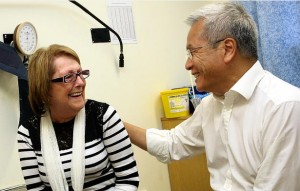Accidents & Violence, Author Interviews / 14.08.2015
Gang Violence Spreads Like An Infectious Disease
 MedicalResearch.com Interview with:
April M. Zeoli, PhD, MPH
Associate Professor
School of Criminal Justice
Michigan State University
Lansing, MI 48824
Medical Research: What is the background for this study? What are the main findings?
Dr. Zeoli: My team and I are interested in whether an infectious disease model can be applied to homicide. In other words, can homicide be described as being “contagious” and does it spread through a city in a systematic pattern? In our previous research, we showed that homicide did spread through Newark, New Jersey, in a manner similar to an infectious disease (http://msutoday.msu.edu/news/2012/homicide-spreads-like-infectious-disease/). However, not all types of homicide may be “contagious.” In this research, we looked at seven motive types of homicide to determine which, if any, of them clustered and spread from one place to another over time.
Of the seven types of homicide we examined, only gang-motivated homicides displayed a pattern of clustering and spreading through Newark, NJ. However, while drug-motivated and revenge homicides did not spread, they did cluster in the same general geographic areas during much of the same time that gang-motivated homicides clustered together.
(more…)
MedicalResearch.com Interview with:
April M. Zeoli, PhD, MPH
Associate Professor
School of Criminal Justice
Michigan State University
Lansing, MI 48824
Medical Research: What is the background for this study? What are the main findings?
Dr. Zeoli: My team and I are interested in whether an infectious disease model can be applied to homicide. In other words, can homicide be described as being “contagious” and does it spread through a city in a systematic pattern? In our previous research, we showed that homicide did spread through Newark, New Jersey, in a manner similar to an infectious disease (http://msutoday.msu.edu/news/2012/homicide-spreads-like-infectious-disease/). However, not all types of homicide may be “contagious.” In this research, we looked at seven motive types of homicide to determine which, if any, of them clustered and spread from one place to another over time.
Of the seven types of homicide we examined, only gang-motivated homicides displayed a pattern of clustering and spreading through Newark, NJ. However, while drug-motivated and revenge homicides did not spread, they did cluster in the same general geographic areas during much of the same time that gang-motivated homicides clustered together.
(more…)
























